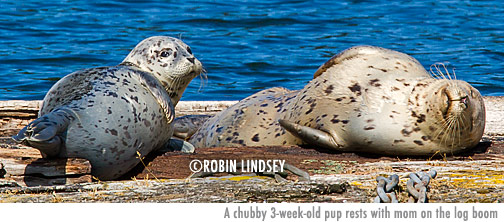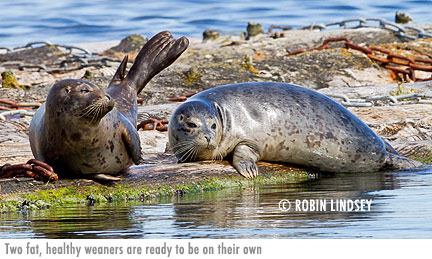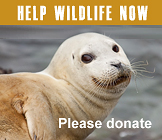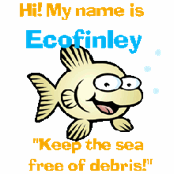Harbor seal pupping season in full swing in South Puget Sound
Aug/30/14 03:05 PM
 Seal Sitters has responded to 5 harbor seal pups in 5 West Seattle locations in the past week as pups leave the safety of the area’s rookeries. We are now in the midst of seal pupping season!
Seal Sitters has responded to 5 harbor seal pups in 5 West Seattle locations in the past week as pups leave the safety of the area’s rookeries. We are now in the midst of seal pupping season! On South Puget Sound’s islands, sand bars, rocky spits and log booms, rotund harbor seal pups are begging for a last drink of mom’s rich milk, almost 50% fat, before venturing off on their own. Many more have already been weaned and are now facing formidable challenges and hazards in their struggle to survive the first year of life. By August 15th, 90% of all harbor seal pups had been born in South Puget Sound (view pupping season map here). As of today, well over half of those pups have been weaned - including the pup shown above, born in Sinclair Inlet on July 2nd.


Even though seal pups learn to forage with moms near the rookery, catching fast-swimming little fish is a daunting task and some are more successful than others. Since their muscles still have not fully developed, it affects their ability to dive for long periods. As the weeks pass, their body weight can drop noticeably.
At the haul-out toward the end of the pupping season (late June through September in South Puget Sound), testosterone-laced males, intent on attracting mates, show off with aquatic displays (porpoising, tail-slapping, bubble blowing) at the water’s surface and compete for space on the haul-out. Adults become grumpy and spend many hours on land during the uncomfortable molt. Food sources can become depleted with so many seals concentrated in a small area. The idyllic world of attentive and affectionate moms is no longer so for weaners. This is the time that many of them strike out on their own, a solitary journey.
By mid-September, 90% of all harbor seal pups will be weaned in South Puget Sound. This means that by then almost every seal pup that is alone onshore has no mom nearby, waiting to nourish them. Consequently, weaners are most often thin and in a daily struggle to survive against predators, disease and malnutrition. Low body weight increases opportunities for parasites and viruses. They must conserve precious calories, so it is urgent to give them space to rest on our urban beaches.
Still, we cannot rule out that pups who are still nursing age will visit our shores as well over the next 6 or more weeks. If a mom is nearby and sees a disturbance near her pup, she will very likely abandon him - adult seals are notoriously shy and wary of people and predators.
Always stay back and keep people and dogs away from resting seals. In West Seattle, call Seal Sitters Marine Mammal Stranding Network’s hotline @ 206-905-SEAL (7325). To view a map of NOAA’s stranding networks in Washington State with contact information, click here.







